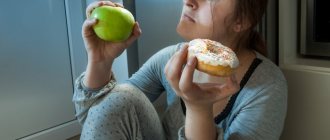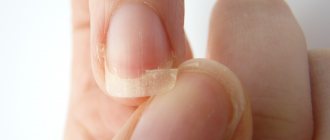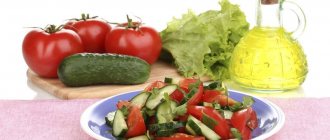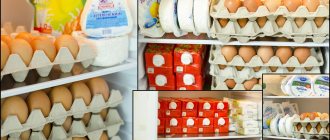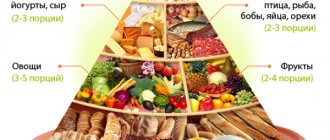Hello, dear friends! Today we will look at one of the important topics for gaining a slim figure and proper weight loss - keeping a food diary. You will learn why you need a food diary, how to fill it out correctly, and you will be able to download the template in excel format for free and purchase the diary book “The Path to an Ideal Figure” in pdf format.
Using my practical experience of working with a food diary, I will tell you:
- How to determine why you are gaining weight?
- Why waste your time on a food diary?
- How to keep a food diary correctly?
- What mistakes should you avoid when keeping a diary?
- Food diary template in excel format
- Food diary “The path to an ideal figure” in pdf format
First of all, I want to note that success in losing weight and gaining a beautiful figure depends 70% on your nutrition, 25% on your workouts, and 5% on caring for your body using various cosmetic procedures, such as: bath, sauna, massage, wraps.
If you are trying to lose weight or gain muscle mass, keeping a food diary will be necessary for you at first. This will allow you to monitor the number of calories you eat throughout the day and even the quality of the foods you consume. The result of such control is a beautiful figure and good health.
How to determine why you are gaining weight?
Let's find out what reasons lead to the gain of excess kilograms in your case.
After all, only after determining the source of excess weight can you begin to choose a method of losing weight (adjusting your diet, balanced diet, necessary physical activity, etc.).
If you don't identify the source of excess weight, after any diet or month of gym training, you will return to your comfortable lifestyle. And the kilograms that you worked so hard on will come back to you again, taking with you a couple more extra friends.
In order to determine why you are gaining weight, it is enough to perform 3 sequential steps:
1. Be patient 2. Make observations and record them in a food diary (aka food diary) 3. Analyze the information received
Now let's look at each point in detail.
Be patient
This point is very important in any business. Your success depends on its implementation.
Most of the time, people fail to achieve their weight loss goals. They begin to lose weight, lose 3-5 kg, rejoice at the first result and relax. Then they gain weight again. At the first difficulties they give up and everything returns to normal.
Our task is to act wisely and not be like everyone else. Therefore, even before you start losing weight, you need to patiently analyze your actions, find mistakes and correct them.
Those who lack patience go looking for “magic pills and miracle cures,” buy them at three times, and shift all responsibility for their lives onto them.
Make observations and record them in your food diary
For the first time, a food diary will replace your nutritionist; you will look at your nutrition from the outside and perhaps immediately find your mistakes.
In any case, it is the food diary that will open your eyes to the source of your extra pounds. Teaches discipline and self-analysis.
Analyze the information received
After you fill out the food diary template, move on to the next step - analyzing the information.
After all, proper nutrition is too comprehensive a concept. For one, this means not eating after 6 pm, for another, not eating at McDonald's and KFS, for a third, not eating foods containing flour/sugar/salt, etc.
Akku
Many people, for one reason or another, decide to change their diet, get rid of junk food, but they do not know which foods to eat and which to refuse. In this case, there are 2 solutions: consult a nutritionist or download the Akku application.
Loading…
In order for the program to create an optimal diet, you must enter your data and also indicate the goal (weight loss, weight gain or maintenance). Recommendations for serving sizes will then appear on the screen.
How does a food diary benefit you when losing/gaining weight?
A food diary template is like a debit/credit for an accountant, your income and expenses.
In it you enter all the food that your body received throughout the day, and expenses are not what you thought about, but any physical activity (hiking, training).
You act as your accountant and keep records. Only instead of accounting transactions you will have the names of products, and instead of monetary amounts - the amount of KBJU (calories, proteins, fats and carbohydrates).
MyFitnessPal
A godsend for those who, in addition to a balanced diet, want to focus on training and even counting calories. Thanks to the MyFitnessPal application, you will have a chance to radically change your life and find the figure of your dreams. The nutrition plan, by the way, is selected automatically (depending on physical indicators and activity), but can be easily edited, combined and updated thanks to its own recipes that anyone can add.
How to keep a food diary correctly?
Now we have reached the most practical section - how to keep a food diary effectively. I will tell you how my clients keep a food diary, give a link to a food diary template in excel format and tell you how you can improve it.
If you have never kept a food diary, at first you may find this a little strange and time-consuming process, but I will tell you how to do it easier and not spend a lot of time and effort on keeping a diary.
The main thing is to understand that now you want to analyze your current situation. There is no need to change your usual diet the next day.
You need a real picture. Therefore, eat as usual, as you have been doing lately, without changing anything.
STEP #1 - Decide why you need a food diary
First, write why you need to keep a food diary and fill out information about yourself:
1. Indicate your goal (losing weight, gaining muscle mass, controlling your diet or quality of nutrition). Provide a specific, measurable goal. For example, lose 6 kg in 2 months. In addition, write down why you need to lose weight.
2. Write down your parameters (current weight, it is advisable to weigh yourself in the morning on an empty stomach, chest volume, hip volume, waist circumference). To more accurately track the results, you can write the volumes of problem areas: volume under the breasts, volume 10 cm above the navel, volume of the widest part of the leg, volume of the lower leg, etc.).
3. Add a general full-length photo and photos of problem areas to your diary to see your progress in losing weight or gaining muscle mass.
STEP #2 - Preparation
1. It is advisable that you have a kitchen scale. Of course, you can do without them, but the data will no longer be as accurate.
If you don't have scales and don't want to buy them, it doesn't matter. Every major supermarket has scales. If you are going to make a salad or prepare a second course, check weigh the purchased products.
Divide foods into smaller bags. For example, portions of nuts purchased by weight can be hung directly in the store. If you eat 10 nuts a day, simply weigh 10 nuts on a scale and write them down in a notebook or remember them.
You can also do this with other foods, such as baked goods.
We buy many products in packages or cans. When you put a product on a plate, read the number of grams on the package and determine approximately how much you put on your plate.
2. You will need a simple notepad with a pen or notes in your phone. Always keep them with you. Immediately after or during meals, make notes indicating the exact number of grams or milliliters.
3. .
STEP #3 - Start keeping a food diary correctly
Download the food diary excel template and fill out the diary template using these rules:
1. After each meal during the day, write down a list of all the foods you ate in notes on your phone or in a notepad.
Write down: When? Note your meal times (breakfast, lunch, dinner and all snacks). What? Names of dishes and products. How many? In grams and milliliters.
Important! Write complete information about the product, this is very important when calculating the calorie content of the diet (for example, sour cream 20% fat - 100 g, kefir 3.2% fat - 200 g) or a finished dish (for example, cabbage soup - 200 g, with pork - 50 g and olive mayonnaise 67% fat - 2 teaspoons). Record all “small snacks” (for example, how much coffee, tea, drinks you drank, how many candies, sandwiches, fruits you ate).
In the evening, it is difficult to remember everything that was eaten during the day, and if the calories in your food diary differ from the actual ones, then you will be greatly misled about your diet and diet.
Example of a food diary
Breakfast 6 am. 1 glass of water Cutlet 100 grams Cottage cheese 50 grams Sour cream 30 grams Jam 1 tablespoon Tea with lemon without sugar 250 ml
Lunch 14:10 Glass of kvass 250 ml Two chicken wings 150 grams Two corn 350 grams Two cucumbers 300 grams Tomato 100 grams
Snack 16:20 Yogurt 3.2% 300 ml Bun 150 grams
Dinner 19:30 Boiled chicken breast 300 grams Two sandwiches with butter and red fish Bread 100 grams Butter 15 grams Red fish 60 grams Banana 100 grams
Before bed 23:00 Kefir 3.2% 500 ml Dark chocolate 30 grams
2. Keep such a food diary for 7 days (from Monday to Sunday, or from Wednesday to Tuesday, it’s not particularly important). Include physical activity in it, for example, a walk in the park at an average pace for 30 minutes, or strength exercises for 1 hour + 20 minutes of cardio.
3. Take time to analyze your calories. Enter all data into a food diary excel template for 7 days.
4. Use the food calculator to analyze your menu for 7 days.
Product Analyzer Recipe Analyzer
Simple, copy data from your table to the analyzer in 1 day.
Transfer the data obtained in the KBJU analyzer (calories, proteins, fats, carbohydrates) to your food diary template.
In the same way, enter the data for the second day and so on in order for all 7 days.
To find out how many calories, proteins, fats and carbohydrates you need, read the article: “How to start losing weight at home.”
As a result, you will get a complete analysis of your nutrition for 7 days by calories, proteins, fats and carbohydrates.
Delicious and healthy recipes from Yazio and Bodymaster
We have selected for you several simple and interesting recipes that will diversify your diet and help you take the first steps towards a healthy diet.
Pizza for breakfast
550 kcal BJU: 19.6/10.9/87.1
Don't be surprised - it's pizza. It's all about healthy and natural products:
- Oat flakes, 200 g
- Chia seeds, 2 tbsp.
- Applesauce, 300 g.
- Frozen berries, 200 g.
- Soy yogurt, 200 ml
Grind the flakes thoroughly. Pour half a glass of water over the chia seeds and wait until they swell. Mix seeds, flakes and puree in a mixer. Place the resulting mixture on a baking sheet covered with baking paper and press into a round shape with a rolling pin. Bake for 20 minutes at 175 degrees. While the pizza is cooking, mix half the berries with the yogurt and use the other half as a topping.
Pour the mixture of berries and yogurt over the finished pizza, add the rest of the berries on top, cut into small pieces and serve.
Baked Sweet Potatoes with Egg
538 kcal BJU: 15.3/15.2/77.2
You will need:
- Large sweet potato
- 1 egg
- Cilantro, 5 g
- Yogurt 0.1% fat, 40 g
- Quarter of an avocado
- Salt and pepper to taste
Wash the potatoes, cut them lengthwise to the middle and heat them in the microwave at maximum temperature for 5-7 minutes. When the potatoes have softened, carefully remove and peel off the skins with a spoon. Mash the middle of the vegetable with a fork, add the egg, salt and pepper. Lightly fry the potatoes with the mixture in a frying pan without oil. Cut the avocado into cubes, chop the cilantro and mix it with yogurt. Add all this to the potatoes and sprinkle with salt and pepper.
Zucchini noodles with avocado
449 kcal BJU: 12.4/33.5/17.9
Ingredients:
- 3 zucchini
- 2 avocados
- Fresh basil, 25 g.
- 3 cloves of garlic
- Sesame seeds, 20 g
- Salt and pepper to taste
Using a small grater, grate the zucchini into thin strips. Lightly fry them without oil. Peel the avocado and blend with basil, garlic, salt and pepper until it forms a thick sauce. Place zucchini noodles on a plate and top with sauce.
Egg soup
119 kcal BJU: 10.6/6.9/3.5
Ingredients:
- Vegetable broth, 1000 ml
- 2 eggs
- Frozen vegetables, 50 gr
- Soy sauce, 1 tbsp.
- Salt and pepper to taste
Boil the broth in a saucepan. In a small bowl, whisk the eggs with a little hot broth. Mix the resulting mixture in a saucepan. Add vegetables and cook until tender. Season with soy sauce, salt and pepper.
Toast with avocado and smoked salmon
480 kcal BJU: 28.1/23.6/31.8
Ingredients:
- 2 slices wheat bread
- Quarter of an onion
- Fresh dill, 2 tsp.
- Low fat ricotta cheese, 50 g
- Half a lemon
- Cucumber
- Half an avocado
- Smoked salmon, 70 g
Toast two slices of bread. Chop the onion and dill, mix with ricotta and lemon juice. Spread the resulting mixture onto the bread. Slice the avocado and cucumber and place on bread. Top with pieces of salmon and garnish with dill.
Bon appetit!
You will find even more recipes in the application itself, as well as in our special section on healthy eating.
What mistakes should you avoid when keeping a diary?
Mistake #1. You start keeping a diary, fill it out for 1-2 days and quit. Remember, you don't have to keep a food diary for the rest of your life. In order to get a real picture of your nutrition, it is enough to obtain data for 7 - 14 days.
Mistake #2. If you miss recording one meal, you become frustrated and stop recording the rest of your meals throughout the day. Even if you missed one entry, nothing bad happened. Remember what you ate, write it down at least approximately and continue to keep your diary.
Mistake #3. One of the main mistakes. Cooked and raw foods have different nutritional values. When entering data into the “Product Analyzer”, select the composition of the prepared products. For example, oatmeal with milk, not oatmeal. If you pre-weighed the product before cooking, then choose oatmeal + milk.
Food diary - pdf book “The path to an ideal figure”
A food diary template in the form of a book “The Path to an Ideal Figure” will become your main assistant in calculating calories and losing weight.
Buy a book from a nutritionist-nutritionist
“Food Diary: The Path to an Ideal Figure!” for 999 rubles 299 rubles.
Buy a book for 299 rubles:
*To buy the book, click the "Submit" button. The book will be sent to you by email, which you indicate when paying.
Nutrition Analysis
In the personal profile tab, you can view your progress on the selected plan. It also displays a graph of your weight changes and provides a list of applications and gadgets that you can connect to Yazio.
The analytics tab collects all information on dietary energy, nutrient intake and energy expenditure in the form of visual graphs.
A super useful option is the ability to add data on pressure, girth, muscle mass and fat tissue to the analytics.
Full functionality of the application will be available to you only in the paid version. In the basic assembly, you can collect a food program and track your weight, counting calories for weight loss. But the premium version, for about 600 rubles, gives access to recipes, plans, daily tips and tricks, as well as more detailed analytics.
What features should a calorie counting app have?
At the moment, there are a huge number of applications for counting calories, which is why users have increased demands on their functionality.
The best apps should have:
- food calorie counter;
- calculation of the daily norm based on the user’s goals;
- weighing calendar;
- protein/fat/carbohydrate food counter;
- a ready-made list of dishes for proper nutrition;
- amount of water drunk;
- notifications with reminders;
- list of physical exercises with calorie consumption.
Having all these features makes it much easier to count calories and maintain a healthy diet.
FatSecret
Using the application, you can easily find out the nutritional value of a product, and a nice addition will be the ability to track meals, weight and exercise. The program is easy to use and has many features including:
- a food diary that helps you plan your diet and monitor the amount of food you eat;
- the ability to scan a barcode;
- diary for recording physical exercises;
- maintaining reports and goals;
- the ability to monitor your weight in the table;
- the ability to photograph products, which will allow you to keep a diary in photo format;
- the ability to monitor progress;
- reminders.
What a training diary can do
– the most complete base of exercises, including strength, cardio, as well as team sports and outdoor sports;
– calculation of energy consumption for all exercises, including strength exercises;
– information on the exercises with a description of the technique, photographs and training videos;
– taking into account time, approaches, number of repetitions, weight of the apparatus, distance, intensity, rest time, type and tempo of power movements and other parameters for exercises;
– creating your own exercises with the necessary parameters and calculating energy costs; – training programs for women and men for various purposes (mass gain, strength gain, relief), in the gym and at home;
– the ability to create your own training program to quickly fill out the diary;
– training reports that allow you to evaluate the dynamics, regularity and progression of loads;
Application links:
Download, try, write reviews - we will be grateful!

